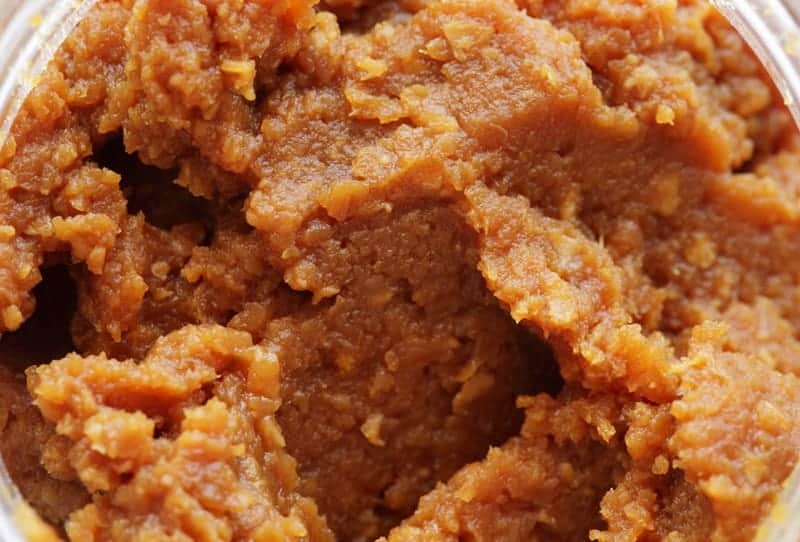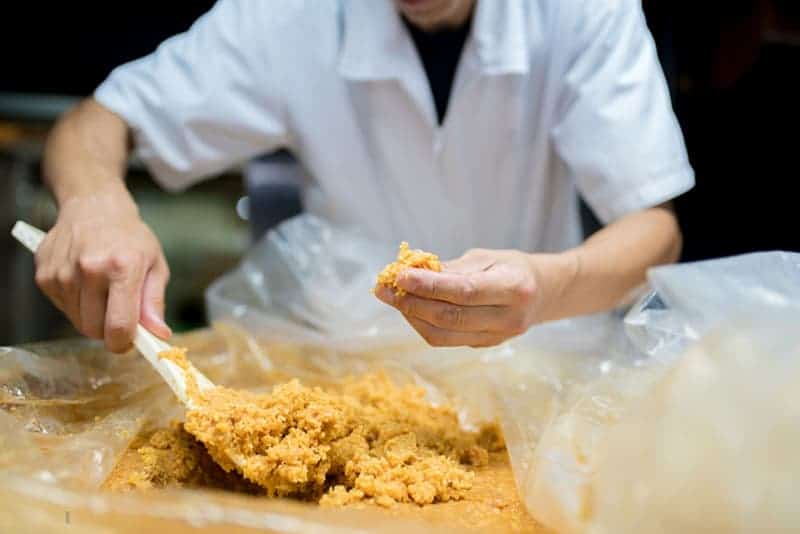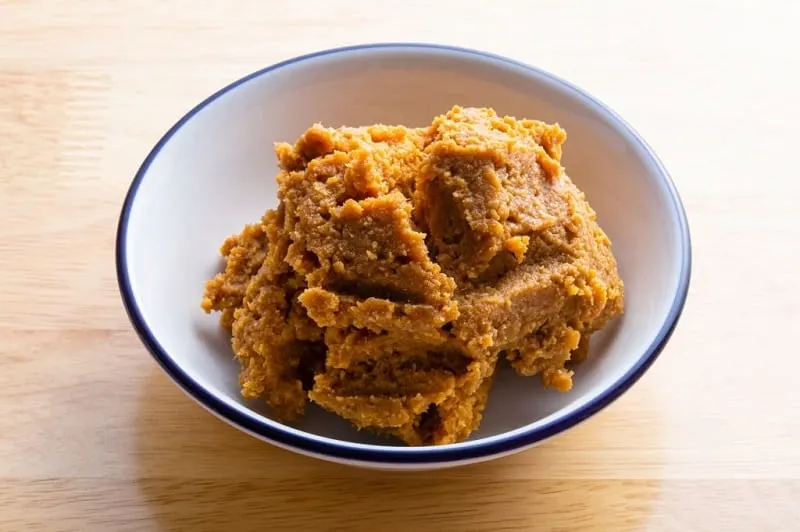The best way to learn about a culture is to try the food.
I believe food is the foundation of any culture and through it, people across the world can connect and learn about one another over the dining table.
Miso is one such food that has been popularized almost all over the world but its origins are rooted in Japanese culture that goes back to the 1500s.
People often mistake miso for a dish, but it is more versatile than that. It is actually an ingredient base where it is used to make various types of miso soups (source).
Miso is a type of preservative and its shelf life is long. However, with the surrounding environment and storage conditions, it can be prone to spoilage which should be a concern.
So, does miso go bad? Read on to find more.
What is Miso Anyway?

Miso is made by fermenting soybeans with salt and a traditional Japanese ingredient called ‘koji’.
Koji is made by boiling rice, soybeans or barley inoculated with Aspergillus Oryaze, which is a fermentation culture.
Consuming fermented eatables will always taste foreign to your taste buds at first and therefore, eating miso on its own will provide a shock to your taste buds as it is tangy and extremely salty.
It has a paste-like texture and they are mainly used for making soups. To be clear, miso is a flavor boost which introduces your palate to a unique burst of tang and taste! More recipes with miso can be found here.
However, because of the unique taste of miso, it is also often added as a salad dressing or used as marinades.
Some people also add a little bit of miso in their vegetable dishes and baked tofu.
In fact, miso is a go-to food product for vegans and vegetarians. But the prospects of using miso are not limited as it is also often used in a lot of traditional Japanese dishes.
There are also obviously different types of miso pastes and it depends on the type of ingredients that were used.
But apparently, if you are out in the market looking to buy one, you will be able to make out the different types of miso by the variety of colors.
How to Store Miso Paste Properly?

Since miso is already fermented in the first place, storing the product would be easy.
If the miso that you bought comes in its own container, do make sure that the lid is sealed tight after you use it.
Never forget to always use a clean spoon to scoop out the paste, otherwise, a dirty spoon or a spoon that has been used will only introduce substances that would spoil the miso paste.
If the miso is in a packet and if you have leftover miso paste, transfer the contents to an airtight container and keep it sealed as well.
The idea for prolonged shell life of miso is to keep it airtight and in a refrigerator.
Keeping the miso paste in the freezer is also a good option if you want to keep the flavor fresh. It is recommended that the paste be stored between 25°F and -5°F.
The miso will not freeze which will make it easy for you to use it whenever you want with the aroma and the flavor all intact.
You can also store unopened miso bottle in a cool and a dry place. It doesn’t necessarily require refrigeration, and it should definitely stay be from places that have heat, particularly a stove.
Bottom line, as long as the miso paste is sealed and kept in a refrigerator, you have nothing to worry about.
Does Miso Paste Go Bad? How Long Does Miso Paste Last?

Some people have claimed that their bottle of miso paste has survived in their fridge for a period of 8 to 9 years but it still tasted good.
Although that is not advisable, it still makes sense, as miso is already fermented and it is, in fact, a preservative.
But according to Hikari Miso, which is the top brand for Japanese miso, it states that miso can lat in good quality up to a full year.
Note that the light-colored variety of miso has a shorter shelf life as compared to the dark-colored variety of miso.
Companies will make it a point to print the best by date in all the miso containers and as a responsible consumer; it is your duty to check the best by date.
Of course, the miso paste will be consumable even after its best by date, since the best by date is an indication that the particular paste will taste the best when consumed within that time frame.
Summing it up, miso has a long shelf life since it is a preservative with salt and it is also fermented as well.
If the product is stored in the right conditions, then you can expect a very long shelf life.
There will be a compromise in its freshness but if that is not a concern, do make sure that they are refrigerated or kept in a cool, dry place.
How to Tell If Miso Is Bad? Miso Shelf Life!

Telling apart between good miso and bad miso is quite difficult as you are already consuming fermented paste in the first place!
But the first instinct that you should trust is your sense of smell. If the miso has an off-putting smell and it just doesn’t smell like the miso you remember, chuck it out immediately.
If you cannot tell the smell apart, bad miso will have some discoloration or the appearance of mold.
Some people argue that some cheese molds are good and unless it looks pink like how this thread suggests, it is still eatable.
However, food molds cannot be trusted, and it is highly likely that your miso has gone rogue and needs to be discarded.
Miso can change to a darker appearance but unless it has an off-putting smell or if it has some mold formation, the miso is still good.

Does Miso Go Bad? How Long Does Miso Paste Last in Fridge?
Ingredients
- Miso
- Air-tight containers or Ziplock bags
- Labels and markers
Instructions
- Read the guide thoroughly to learn how long it lasts.
- Check the u0022Best-by-dateu0022 to know when it expires.
- Make sure to store in an airtight container in a cool, dark place (pantry or fridge).
- Always check for signs of spoilage before using.
